All about Haworthia

There is a belief that the Haworthia plant is a protective talisman that brings goodness and charges the house with positive energy. Of course, not all flower growers agree with popular superstitions, as well as with religious motives. And yet, most people who love to grow flowers on their windowsill often follow folk signs.

This plant does not have colorful and eye-catching leaves, is not rich in flowers. And yet it has become widespread in the world floriculture. For the entire cycle of its life, Haworthia does not cause inconvenience. By nature, the plant is picky. And yet, for its breeding and cultivation, it is necessary to carry out decent care. Subject to the rules of home maintenance, each person will be able to get closer to this exotic flower.

Description
Haworthia is a graceful perennial. The first copies were brought to the territory of European countries in the 18th century. The homelands of Haworthia are Southwest and South Africa. The plant is named after the famous foreign botanist Adrian Haworth. To date, more than 150 species of the represented plant are known in the botanical environment. In appearance, the flower looks like a cactus, but when you touch the Haworthia, you immediately feel the difference.



This home-grown succulent plant can grow up to 30 centimeters in height. Its leaves are dense and rather fleshy. In shape, the plant resembles a rosette, which is located on a small stem and is barely visible to the naked eye. The surface of the leaves is smooth to the touch, sometimes with bulges that stand out in white. For each individual type of haworthia, the edges of the leaf plates differ in structure. They may resemble a jagged edging, the edges of the sheets of other specimens are completely smooth, and the tips of the sheet are endowed with a sharpened angle.

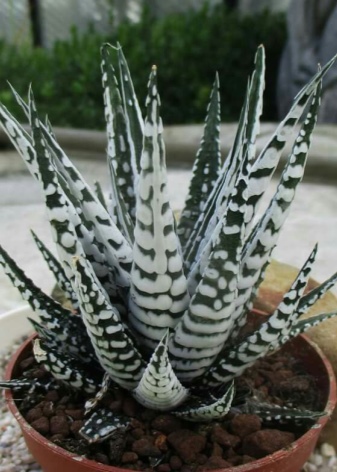
Some varieties of the Haworthia plant have an interesting feature. At the end of the leaves, there are small transparent areas resembling glass windows through which the plants receive sunlight. During the flowering period, many species of Haworthia bloom small, elongated tubular flowers with petals bent to the side.
Very often, haworthia is confused with other representatives of a flowering garden, for example, with aloe. And only experienced florists can immediately tell the difference between them. Firstly, aloe does not dissolve children, while Haworthia has a lot of them. Secondly, ribbed grooves are clearly felt from the bottom of the haworthia leaf plates, the surface itself is slightly rough. Aloe does not possess the presented features. If you want to grow the described succulent, novice growers are worried that a plant native to Africa may turn out to be poisonous. In fact, poisonous substances are present in the plant juice of Haworthia, but in low concentrations, which will not harm the human body.

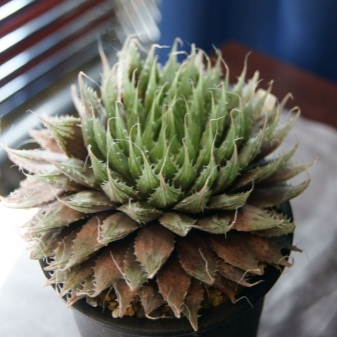
Distribution in nature
The homeland of Haworthia is the southwestern and southern parts of Africa. In the botanical classification, the plant belongs to the Xantoreide family. According to its main features, it is considered a herbaceous perennial. In nature, Hawortia can be found in arid places such as the desert. The plant reaches 15 centimeters in length.A distinctive feature of wild haworthia is the replacement of old leaves with new young children, growing on top of each other, due to which the plant itself turns out to be much higher. Scientists and botanists met on their way desert haworthia of various species, whose age exceeded 10 years. They were just over a meter high. Since Haworthia is not a capricious plant, it grows naturally even in the wild.

Varieties
Modern growers know about the presence of more than 150 varieties of Haworthia, which are grown in the setting of apartments and houses. Moreover, each individual copy has multiple differences from its counterparts. Of course, not all the variations of Haworthia brought here have taken root at home. Nevertheless, about 70 representatives of this plant have perfectly adapted to the room environment and home growing conditions. In this list, there are several plant varieties that are most popular among flower growers.

Haworthia striped
This representative of the Ksantoreev family does not have a stem in the structure. Narrowed leaves. The color is more like a swamp shade. Fleshy leaves are combined with a dense rosette design. The surface of the sheets is smooth, with light-colored hillocks below. During the flowering period, it dissolves small flowers in the panicle area.
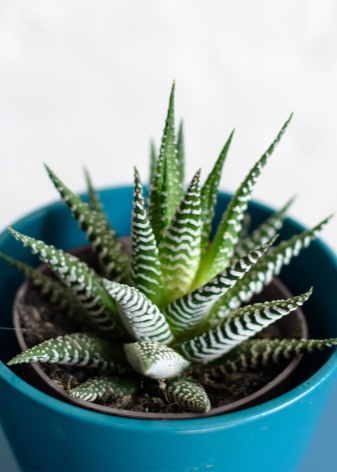

Haworthia pearl
In the scientific literature, this representative of the Xantoreev family is called pearl haworthia. The plant has dense pearl-speckled leaves. The tips of the leaves are sharp, with small thorns along the edges. Inflorescences are brushes of green flowers. After flowering, the rosette rots, and daughter shoots form in its place.


Haworthia Reinwardt
The presented succulent grows in length up to 15 centimeters. It has no rosettes, the leaf plate is a pointed triangle, tightly fitting inside the structure of the plant. From the lower part, the leaves are covered with small growths of a white hue, which disappear when there is a lack of sunlight. The inflorescence of Haworthia Reynwardt consists of small, lemon-colored flowers.


Haworthia Attenuata
The second name of this plant is Haworthia Attenuata. In appearance, it has common features with striped haworthia, although it does not look so impressive. The maximum leaf length is 6 centimeters, and the maximum width is 2 centimeters. On both sides, the leaves are covered with almost invisible dots of dark green and black shades. The variegated variety has rosettes of yellow tones or leaves with a striped pattern.


Haworthia navicular
The dense leaves of the flower are shaped like a chess rook. The close arrangement of sheets to each other makes up a dense rosette. A distinctive feature is the bright green foliage with a glossy finish. During the flowering period, small white flowers are formed on the plant.


Haworthia Cooper
The maximum height of the presented species is 20 centimeters. The leaves are rough, small in size. They grow three pieces in a row. On the upper side, they have a depressed shape with tops curved inwardly. The lower part of the sheets is presented in the form of a chess rook.


Haworthia meandering
The presented species of succulent has a rather interesting shape. The leaves are elongated, the ends are pointed. The shape of the sheets is curved, convex. The plant itself has a dark green surface, which is covered with small white pimples.


Haworthia sticky
The second name is "viscose". The presented type of plant reaches a height of 20 centimeters. The leaves are small, oval. They are 2.5 centimeters long and no more than 1 centimeter wide. The appearance of 3 small rows of bulges on flat leaf forms indicates that the plant is adult.


Haworthia mosaic
Sometimes it is called chess.In structure, it differs in fleshy foliage of a convex shape. The plant resembles a spiral in shape. The outer parts of the sheets have poorly discernible denticles. There is a light mesh on the upper side of the leaves.


Haworthia limoliferous
It features strong and dense leaves with a maximum width of 4 centimeters. The tight design is a reinforced socket. The petals rise upward. Several thin thorns are present along the edges of the sheets. The surface of the plant is decorated with white ribbed lines.

Haworthia grater
In appearance and structure, it resembles a pearl specimen. A distinctive feature is foliage, which randomly grows on top of each other. The elongated sheet plate has a small thickness and pointed tips. There are small spines on the sides.


Haworthia herbaceous
The presented variety is found in apartments and houses much more often than other species. The leaves of the plant are framed with soft fringes. In color, haworthia herbaceous is presented in several variations and changes its color depending on the care.


Haworthia cobweb
The plant looks like herb haworthia. Differs in a thin and dense arrangement of lateral processes, which create the image of a woven whitish ball.

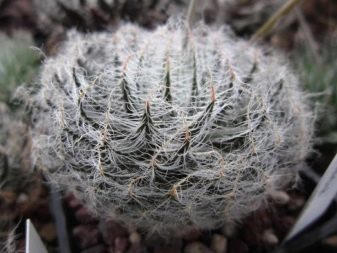
Haworthia retuza, or blunt
Of the general variety of species, the presented plant is distinguished by dense and densely arranged leaves, which change their color with a strong deficit of the sun.


Haworthia dwarf
The second name of the presented species is pygmy Haworthia. It owes its name to its miniature size. The length of the leaves does not exceed one centimeter, the diameter is 6 centimeters. Touching the leaf of this plant, a slight surface roughness is felt.
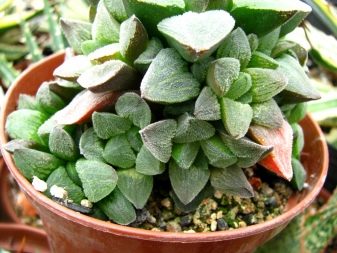

Haworthia Marginata
It looks very much like an artificial flower. The leaves are similar to plastic material. As the flower matures, the color scale of the leaf plate will change.

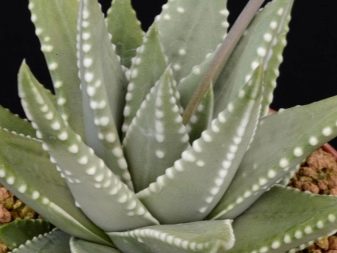
Haworthia Atrofuska
The leaves are reddish plates.


Haworthia chopped off
The second name of this flower is Haworthia Trunkata. The leaves of the plant are fleshy, grow in two rows. A distinctive feature lies in their tips, which have a chopped off appearance. Each individual sheet ends at a different height.


Haworthia Maugani
The peculiarity of this plant variety lies in the cylindrical leaves, the tips of which are endowed with translucent bulges.


Haworthia Big Band
The maximum height of the succulent variety presented is 10 centimeters. Leaves are dense, fleshy. The color of the plant is dark green. The surface of the leaf plates is smooth to the touch, although there are slightly protruding specks of a light shade on the underside.

Haworthia Tortuosa
The plant has a dark green hue. Its surface is covered with barely noticeable tubercles. The leaves are voluminous at the base, tapering towards the tip.


Each type of succulent can be grown separately, but having received even minimal experience in caring for this plant, you can try to make a mix of them. To do this, you will need to combine several types of haworthia of the same size and add decorative elements to the container.
Breeding features
Experienced growers know that almost all types of plants have several propagation options. The same goes for Haworthia. The first most common way is the seating of children. The proposed option for separating the shoots from the mother base must be carried out in the spring.
- The plant must be removed from the pot. Remove old soil remaining on the roots. Then separate the babies along with the root base.
- Young shoots must be transplanted into another pot with prepared soil. Then pour a little. It happens that when the children are dividing, the embryos remain without a root.In this case, it is necessary to sprinkle the wounds with a special powder made of activated carbon and leave the flower to dry for several days. And after that, planting in moistened sand. Once the root has formed, the plant needs to be transplanted into a suitable soil.


The second method of reproduction is carried out by planting a haworthia leaf. The proposed option is most suitable for varieties with a narrow and elongated sheet plate shape.
- In an adult plant, you must carefully break off a leaf. The main thing is that it does not break or get damaged in the center. When splitting off, the leaf should easily move away from the attachment point to the stem. It is necessary to tear it off by slightly pulling it to the side.
- The selected sheet must be dried. Two weeks will be enough for this process.
- After drying, the leaf should be planted in moistened sand and wait for roots to appear. This process takes about a month.


Greenhouses cannot be created, otherwise the prepared leaf will rot. The most suitable period for this is February and March.
The third breeding method is by rooting the stem cuttings. This option is used extremely rarely, despite the fact that it is very effective.
- Use a silk thread to separate the stalk. It is placed above the lower leaves and adjusted with a stick so that it completely covers the stem. The ends of the thread should be crossed and pulled sharply. This creates a neat cut.
- The place of flower separation must be treated with activated carbon powder or sulfur. Then leave the cutting for a week to dry.
- The harvested stalk must be rooted in moistened sand.
- As soon as the root system has arisen, the Haworthia seedling must be transplanted into the ground.

The fourth method of reproduction is carried out by sowing and growing seeds. This process is rather complicated and only breeders use it.
- Selected Haworthia seeds must be sown in moistened sand. They must be covered with foil or glass flask. The temperature inside the structure should be at the level of 20-25 degrees Celsius.
- The waiting area for seedlings should be well lit. As soon as the first embryos appear, the film must be removed, and the seedlings must be placed under bright lighting.
- Six months later, you need to transplant the resulting seedlings into separate pots.


Landing rules
The procedure for breeding Haworthia at home is very simple. After the emergence of the root system, the plant must be planted in healthy soil so that the flower grows in complete coziness and comfort. The same applies to transplanting a plant, since there are times when transplanting a flower is extremely important for its condition. The container for planting and transplanting should be slightly larger than the previous size. Unfortunately, many growers are transplanting into the same pot, simply by slightly updating the soil. This is not worth doing. When choosing a pot, it is better to give your preference to round shapes with a wide diameter and low walls. A huge volume of container for a flower is undesirable, since in it the haworthia will begin to give more energy to growing the root system, and not to the leaves. And the soil itself in a large pot can turn sour.

The new pot must have a drainage system. Haworthia is an unpretentious plant, therefore it does not need special mixtures. No wonder it grows in the wild in dry areas. As a planting soil, a mixture for succulents will be ideal. In such a soil, there is brick chips, which helps to regulate moisture. Although over time, this crumb will disintegrate and can harm the root. To avoid such incidents, it is best to prepare the soil yourself.

Transplanting adult plants is done once every three years - just when the old pot becomes cramped. And young shoots are transplanted once a year.If the grower notices that the roots have begun to wither, the plant must be transplanted immediately, but only in a small container.
If Haworthia was purchased in a store, it must be transplanted into natural soil. The transport mix is not suitable for growing the plant. Moreover, in the process of transplanting it will be possible to get acquainted with its root system. The very process of planting or transplanting Haworthia is quite simple. The main thing is to follow the sequence of actions and work correctly with a thin root system.
- The bottom of the new container must be filled with expanded clay, which provides high-quality drainage.
- A plant removed from an old pot must be carefully examined. If damaged or dry parts of the root system are found, they must be cut off before healthy tissue begins. The cut ends should be treated with a fungicide and left for one day.
- The plant must be lowered into the prepared container, gradually add the prepared soil, so that the earth is evenly distributed on the roots. You can't press down on the ground. The root system of Haworthia is delicate and can be damaged by physical exposure.
- The planting soil is collected in the form of a cone. This is necessary so that the liquid runs to the walls of the planting container, and not to the stem.



Experienced growers love to plant succulent mixes, consisting of different shapes and sizes of haworthia. The created composition will undoubtedly become a bright element of a blooming garden and even on a windowsill. To create such a masterpiece, you need to do a few simple steps.
- Pick up a new round vessel made of durable glass. Then rinse and disinfect it well. A napkin moistened with alcohol will do for disinfection.
- The prepared vessel must be filled with a drainage layer. In this case, you will need a lot of it.
- It is necessary to prepare the ground. You will need to combine garden and leafy soil, adding a little sand and activated carbon to it.
- Decor elements should be prepared. It can be small stones, shells, driftwood. Colored sand is desirable.
- It is necessary to carefully select the plants that will be located in the mix. Due to their color saturation, you can come up with an original composition.
- Remove old soil from the selected plants. Rooting of haworthia in the grooves of the florarium must be done extremely scrupulously, and only after that begin to lay out the decor.
- The composition will need to be poured a little from the watering can. The next watering of the mix is done only after a month.
- The florarium is located in a bright room with a constant supply of fresh air.

The planting of Haworthia is mainly done in the spring, the plant rests in winter.
Subtleties of care
Any indoor plant needs special care. It is important to talk with flowers, they need to feel good from their owners. And flower growers must understand how to fertilize them correctly, how to behave in relation to flowers. Haworthia, of course, is an undemanding plant, but it still requires some attention. Moderate watering is the key to healthy flower development. In summer, the plant should be moistened no more than 3 times a month. If during the summer period the Haworthia is located outdoors, then it must be watered often and abundantly. A plant located in a shady zone should be moistened a little less often. The distance between waterings must be carried out after inspecting the land. If it is completely dry, then the soil needs to be fed with liquid. Do not worry if Haworthia is left without water for a long time. Due to its practicality and ancestral belonging to desert plants, it freely survives drought.
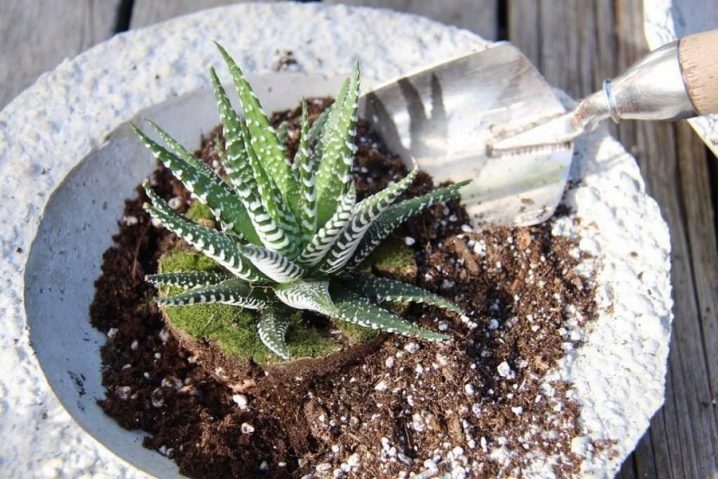
Watering in the winter season is done only once a month. In this case, the water must be poured out of the pan.Every florist must know that when watering Haworthia, the water should never come into contact with the leaves. Otherwise, the trapped water droplets will accumulate near the stem, and this collected moisture will kill the flower.
The time to fertilize Haworthia begins in early spring and ends with the arrival of autumn. The soil should be supplemented with useful trace elements once a month. It is necessary to use a special feeding for cacti and succulents, which is diluted with water. Some growers use granular fertilizer, adding it to the soil composition in the amount specified by the manufacturer. An overdose will not occur, Haworthia will take the released useful elements only in moistened soil.

To increase the growth rate of haworthia, fertilizers are used, which contain a large amount of phosphorus and potassium, but little nitrogen. Unfortunately, flowering occurs very rarely in a room environment. Around May, adult plants can release flower stalks. Experts advise getting rid of flower growths from their very appearance, since the plant spends a lot of energy on growing them. In addition, among the huge variety of Haworthia species, there are representatives for whom flowering is highly undesirable. After the initial flowering, the plant dies immediately.

Haworthia experiences a period of calm in winter. It starts in mid-November and ends in early March. For this period, the plant should be removed from heating systems in a cool room, where the maximum temperature is 12 degrees Celsius. Haworthia is watered once a month in winter. She perfectly survives the winter drought.
Possible diseases and pests
Like all indoor plants, ornamental haworthia can be susceptible to diseases that are caused by various pests. Their list is quite small, but when certain microorganisms are identified, urgent measures should be taken so that the haworthia does not dry out and die.
- Gray rot. The primary symptoms are visible on mature leaves. Ash-colored spots appear, and the affected areas become soft to the touch from hard ones, then the leaves with them turn yellow and die off. A foundationol solution will help get rid of gray rot. As a preventive measure, it will be necessary to cut off the affected sheets, rearrange the pot to a lighted area.

- Mealybug. These pests are easy to distinguish by the white color of the body and the sticky secretions that remain after them. On the leaves, they become visible immediately, and when they are in the root system, it is, unfortunately, difficult to notice them. The roots should not be allowed to rot, therefore, when the first such symptoms appear, you should carefully study the haworthia by pulling it completely out of the pot. A solution of "Aktara" will help to get rid of the mealybug. Initially, it is necessary to carry out two or three treatments at intervals of a week. If the mealybug is on the roots, the plant should be watered with the prepared solution of the same Aktar. For prevention, it is best to treat the bush with a mixture of essential oils and running water.

- Thrips. These pests can be located both on the plant itself and in the soil. They look very much like flies. Signs of their appearance are brown bloom with a silvery sheen. The Fitoverma solution helps to get rid of thrips. As a preventive measure, it will be necessary to replace part of the soil, and it is best to transplant the plant into new soil. In this case, it is necessary to treat the root system with Aktara solution.

- Slugs. They arise on Haworthias that grow on the street. It is very difficult not to notice them - healthy leaves become thinner, eaten parts appear on them. "Metaldehyde" will help to overcome slugs, which should be poured onto the ground and a place near the pot.The composition of "Metaldehyde" makes slugs crawl to the surface in an attempt to escape, and the grower will only need to collect insects and destroy them by hand. To avoid the appearance of pests, the plant should be kept away from aching flowers.


For information on how to properly care for Hawortia, see the next video.








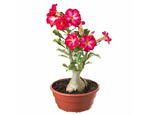




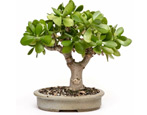




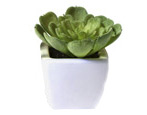








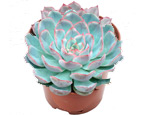






















The comment was sent successfully.